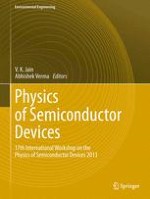The purpose of this workshop is to spread the vast amount of information available on semiconductor physics to every possible field throughout the scientific community. As a result, the latest findings, research and discoveries can be quickly disseminated. This workshop provides all participating research groups with an excellent platform for interaction and collaboration with other members of their respective scientific community.
This workshop’s technical sessions include various current and significant topics for applications and scientific developments, including
• Optoelectronics
• VLSI & ULSI Technology
• Photovoltaics
• MEMS & Sensors
• Device Modeling and Simulation
• High Frequency/ Power Devices
• Nanotechnology and Emerging Areas
• Organic Electronics
• Displays and Lighting
Many eminent scientists from various national and international organizations are actively participating with their latest research works and also equally supporting this mega event by joining the various organizing committees.
